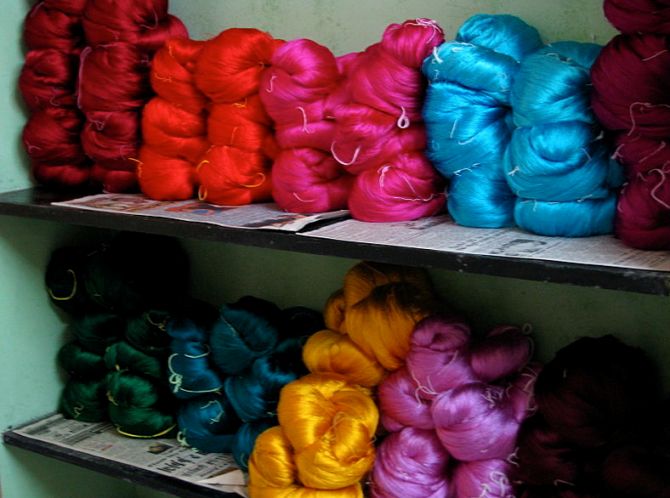 | « Back to article | Print this article |
Iconic sarees all set for a revival
Ancient saree varieties of Tamil Nadu like Kandangi, Sungudi, Chinnalampatti and Koorai Nadu that were popular decades ago are all set for a comeback with state-run Cooptex set to launch a revival plan for the sarees of a bygone era.
The Tamil Nadu government has granted Rs 14 lakh (Rs 1.4 million) to the Tamil Nadu Handloom Weavers' Co-operative Society, popularly known as ‘Co-optex,’ to go ahead with the plan to revive traditional sarees.
Weavers skilled in making traditional sarees are very few and efforts are on to identify such craftsmen so that they could be roped in for making the sarees for Cooptex.
"We have decided to provide incentives to member-societies and weavers under the revival package for making traditional sarees," U Sagayam, Managing Director, Cooptex, told PTI.
Click NEXT to read further. . .
The image is used for representational purpose only
Iconic sarees all set for a revival
The core features of ancient sarees would be retained, Sagayam said, adding interventions would be in the areas of design and colour to suit the needs and sensibilities of modern day working women.
Pointing out that decades ago, Sungudi, Kandangi, Chinnalampatti and Koorai Nadu saree varieties had a huge market, the senior official said sale of such varieties was now insignificant.
"The revival plan will also support the weavers, apart from bringing back colourful traditional Tamil Nadu sarees in its original form," the official said.
Chettinadu region [Karaikudi and its surroundings] is home to "Kandangi" variety. Made of cent per cent cotton, it is well known for its dark colours and check patterns.
Click NEXT to read further. . .
The image is used for representational purpose only
Iconic sarees all set for a revival
"Sungudi" was traditionally made at Madurai and the cotton sarees are known for their rich colours and design craftsmanship.
"Chinnalampatti," noted for its shine like silk sarees is also the name of a town near Dindigul. It is made of ‘art silk.’
Sadly, Chinnalampatti does not produce such sarees anymore.
"Koorai Nadu" specialty is the mix of silk and cotton in both warp and weft and Mayiladuthurai region is home to this variety.
If fast changing fashion trends led to the decline in demand for traditional sarees over the years, Cooptex hopes it could redefine fashion with the right intervention in design and colour.
Weavers who could not get a commensurate increase in price though the cost of processes and textile inputs for making traditional sarees kept rising can now have hope as the apex handloom weavers body has decided to incentives member-societies.
Click NEXT to read further. . .
The image is used for representational purpose only


